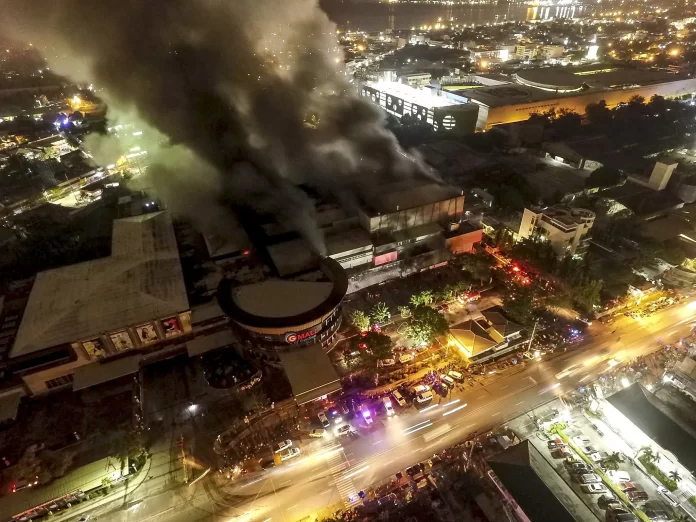At least 26 people were injured and an international airport was shut after a powerful 6.4-magnitude earthquake rocked northern Philippines.
The quake struck 9km northwest of Lagayan town in the landlocked Abra province at a depth of 11km on Tuesday night, followed by numerous aftershocks till the next morning.
It was set off by movement in a local fault, according to the Philippine Institute of Volcanology and Seismology.
Tremors were felt across the northern Luzon region, including in some parts of metropolitan Manila, located over 400km south of Abra province.
In Ilocos Norte, the home province of president Ferdinand Marcos Jr, at least 26 were injured in the earthquake. The international airport in the capital city of Laoag was ordered to close temporarily due to damage from the quake, civil aviation officials said.
In Ilocos Norte’s Batac city, patients were forced to spend most of the night outside after parts of the province’s largest government hospital collapsed on several rooms and damaged equipment.
Medical consultation services were temporarily suspended as engineers assessed damage to the building, officials said.
“We hid under a table and my family only went out of the house after the shaking stopped,” Ron Sequerra, a rescuer in Abra told AFP.
The president, who was in Manila, said authorities are inspecting damage to roads and buildings, while welfare officials were providing help to affected residents. “Everyone is advised to keep out of tall structures,” Mr Marcos Jr said in a tweet.
“People are asking for tents, and the reason why is they are afraid of going back to their houses because of the aftershocks, which could collapse their houses with the foundations weakened,” the president told reporters.
READ ALSO: Palestine: The UN wastes Palestinian lives and time
Several old churches in Abra and Ilocos Norte sustained damage.
In the town of La Paz in Abra, a century-old Christian church was damaged, with parts of its belfry collapsing and some walls cracked.
Matthew Manotoc, the governor of Ilocos Norte, declared a school holiday and asked government workers not to report for work as authorities inspected the integrity of buildings.
At least two towns in Cagayan province were without electricity for a short period of time due to damaged power lines. A number of bridges and roads in outlying provinces were damaged, according to the Associated Press.
The Philippines lies along the Pacific “Ring of Fire” and has witnessed some of the most severe earthquakes in the world.
In July this year, a seven-magnitude earthquake set off landslides, killing at least five people and injuring dozens in Abra and other northern provinces.
In 1990, a magnitude 7.7 quake killed nearly 2,000 people in the northern Philippines and wrought extensive damage.
Read Original Post













